During the chaotic weeks following the Italian armistice with the Allies on September 8th, 1943, numerous accounts of bravery, resistance, death, and sacrifice occurred. However, one account stands above the rest. This is the massacre of the 33rd Infantry Division Acqui deployed on the Greek Island of Cephalonia in September 1943.

General Antonio Gandin (L) and the 33rd Infantry Division Acqui insignia (R).
Acqui Division Arrives in Cephalonia
The Acqui division took part in the Greek-Italian war conflict of 1940-1941. After a resting period on the island of Corfu, it was assigned a mission to garrison the strategic island of Kefalonia, Greece. The Acqui subsequently deployed there in May 1943.
The division consisted of the 317°, 17°, and 18° Infantry Regiment. The latter one being detached on the island of Corfu. Additionally, the 33° Artillery Regiment and various support battalions encompassed a total of 11.500 soldiers, 525 officers.
General Antonio Gandin became Acqui Division’s Commanding Officer in June 1943. Gandin was a veteran of the eastern front who had fought in the Italian Expeditionary Corps in Russia, had previously been awarded a German Iron Cross.
A Questionable Alliance
In August 1943, the German 966° Fortress Grenadier Regiment (1.800 men) arrived on the island to reinforce the garrison. However, it is more likely these troops arrived in Kefalonia to monitor the Italians.
King Vittorio Emanuele III deposed Benito Mussolini a month earlier. Germany became skeptical of Italy’s desire to continue fighting as their ally. Indeed, peace talks with the Allies already started in secrecy and the armistice was effectively singed on 3 September 1943 and made public on the 8th.
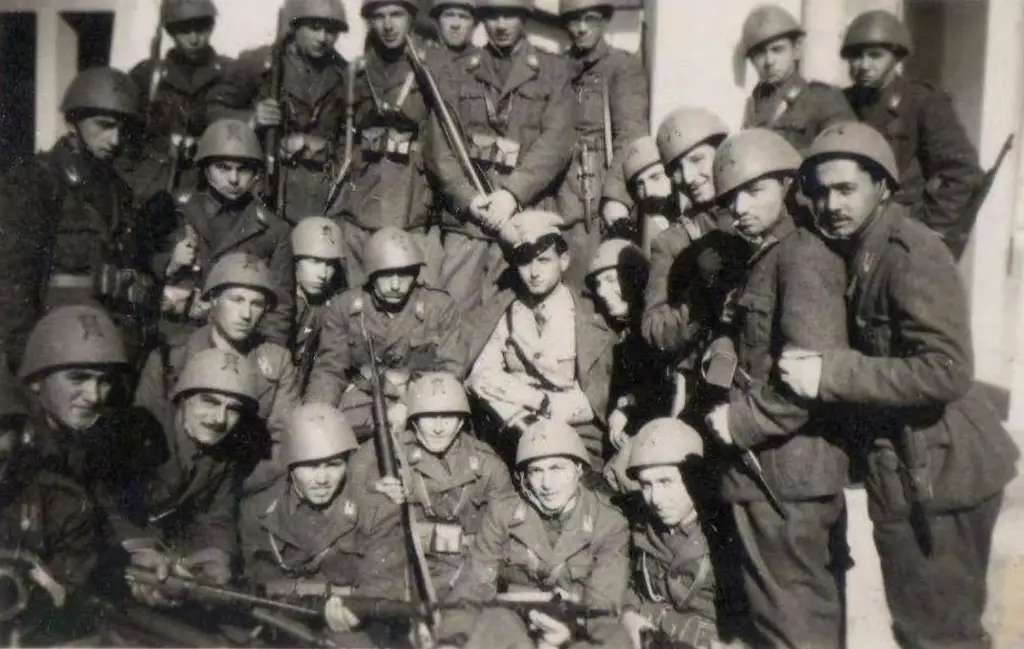
Soldiers of the Acqui Division on Cephalonia. Image: associazione acqui.it
On the evening of 8 September, 1943, soldiers and officials of the Acqui division heard Pietro Badoglio‘s radio broadcast announcing the armistice. Many young soldiers welcomed the declaration with jubilee, thinking the war was over and they would soon be going home.
A few hours later, Gandin received a radio message from the Italian 11th Army HQ from the mainland. The message stated hostile acts must not be initiated against the former allies. But in case of a German attack, all Italian units should respond.
Positions on Cephalonia
The 317° infantry regiment of the Acqui was deployed in the defense of the North-Eastern sector of Kefalonia. The 17° infantry regiment garrisoned the town of Argostoli, the main center on the island, and its bay, along with most of the artillery units. The Germans guarded the Lixuri peninsula, in the north-west.
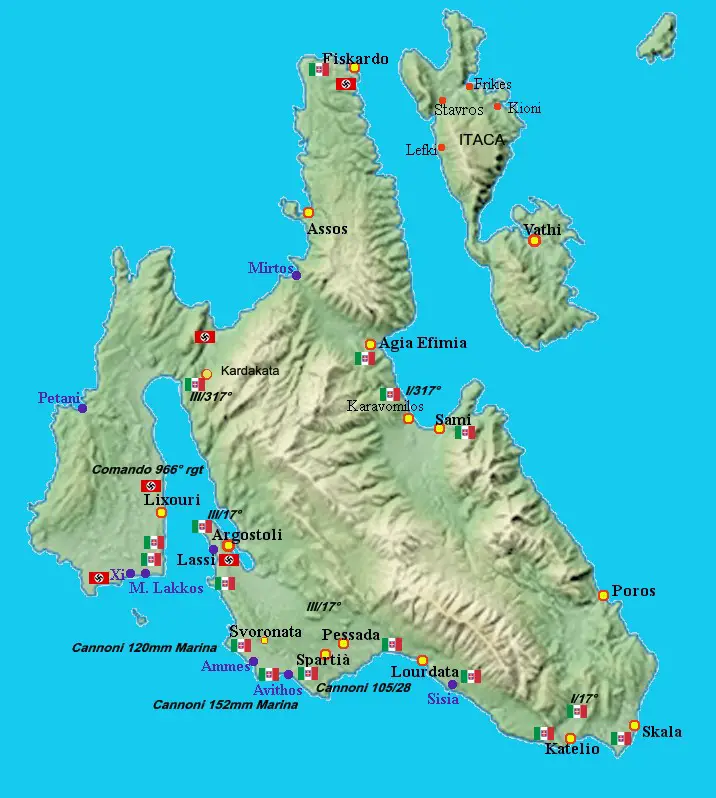
Acqui Division and German forces position on Cephalonia in 1943.
9 September 1943
The night before the 9th, Gandin invited Lt. Col. Johannes Barge, Commander of the Festungsgrenadier Regiment, to join him for breakfast the following morning. Barge cordially refused and sent Lt. Fauth on his behalf, with whom Gandin had good relations.
Meanwhile, Gandin ordered the concentration of Italian reserves in the Argostoli sector in order to repeal any German attack.
The first tense situation erupted between Germans and Italians on this day. Acqui units blocked some Wehrmacht motorized columns and sent them back to the Lixuri sector. In some cases, there were threats to open fire. The tension was clearly mounting in Cephalonia.
10 September 1943
On the 10th, General Gandin received another message from the 11th Army HQ putting him in a much more dire situation. The message stated all Italian forces had to surrender their arms to the Germans and await repatriation back in Italy.
Surrendering their arms to German forces was not an easy choice, especially when there is no guarantee on what happens next. Gandin asked HQ for confirmation of the order but received no reply.

Lt. Col. Johannes Barge, Commander, Festungsgrenadier Regiment.
Lt. Col. Hans Barge arrived in Argostoli to meet Gandin to ask for the Italians to surrender its heavy weapons to the Germans. Gandin replied he had no orders in such regard and that he was awaiting instructions.
Gandin summoned the Division General Staff, gathering regiment commanders to discuss what to do. He understood the gravity of the decision. Although outnumbering the Germans 6:1, the isolated Acqui Division had no chance of reinforcements, nor any air and naval support of any kind.
Gandin and most of the officers opted for negotiating with the Germans to surrender the artillery. As an act of good faith, Gandin ordered the withdrawal of an infantry battalion from Kardakata, an important crossroad linking the Lixuri peninsula to Argostoli.
Gandin’s order worried several young officers from the 33° Artillery Regiment who were ready to fight the Germans and not inclined to give up their arms. Turmoil and fear erupted among the ranks of the Acqui.
11 September 1943
During the early hours, Wehrmacht reinforcements started to arrive in the form of a seasoned battalion of the Gebirgsjäger 1st Mountain Division.
In the morning Barge and Gandin struck a general agreement where Acqui would surrender its artillery.
However, during the same morning, Barge came back to Gandin and presented him with an ultimatum listing three options:
- Continue to fight alongside the Germans.
- Surrender all weapons.
- Fight the Germans.
Gandin once again gathered the Divisional General Staff, including all seven army chaplains of the Acqui. This strange decision by a military commander highlights the extremely difficult and chaotic situation the Acqui Division and all Italian forces faced abroad.
Gandin wanted to gauge the morale of his troops and the chaplains begged him to avoid any useless loss of life. When Barge returned to Argostoli, Gandin bought more time and reiterated the proposal of just giving up the artillery.
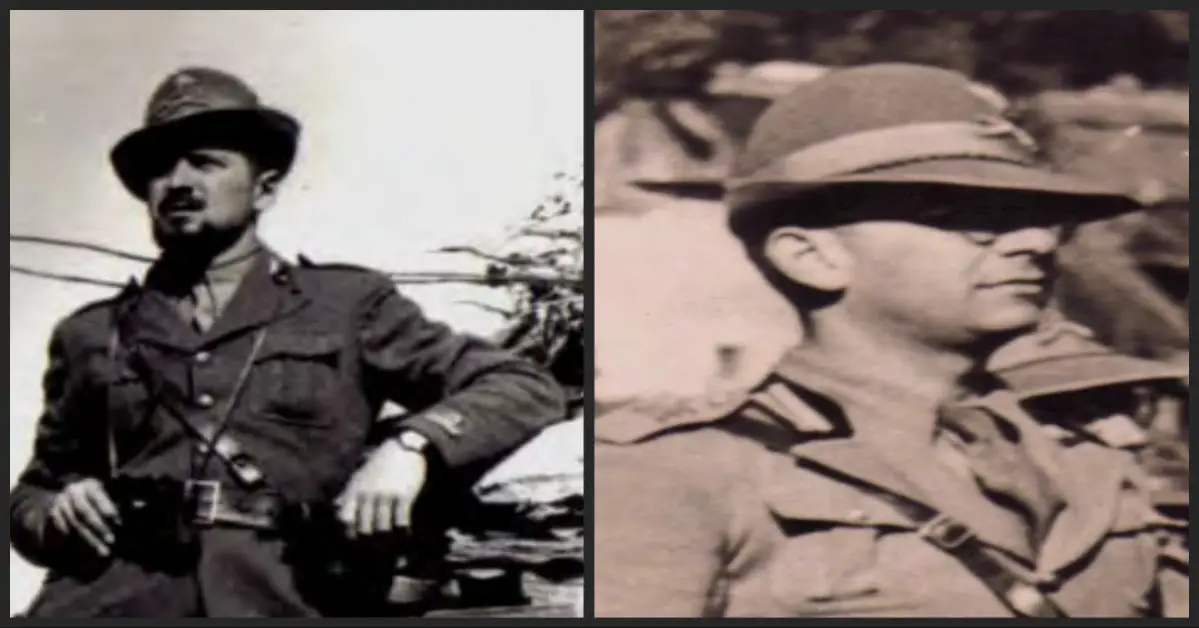
Lt. Renzo Apollonio (L) and Captain Amos Pampaloni (R).
Meanwhile, a revolt was mounting among the ranks of the Acqui. It was led by two officers of the 33° Artillery Regiment, Commander, 1st Battery Captain Amos Pampaloni, and Commander, 7th Battery Lt. Renzo Apollonio. These young officers did not want to surrender their arms, claiming it was a question of military honor. Additionally, widespread mistrust of the Germans existed. The mistrust manifested by scattered reports from the mainland of German attacks on other Italian units.
12 September 1943
With the revolt mounting, Gandin met Pampaloni and Apollonio, who stressed their desire in not surrendering their arms. Gandin attempted to explain the situation. He stated the Acqui Division had no chance of mounting a long-lasting resistance against the Germans.
Apollonio and Pampaloni replied that the day before, German forces committed a hostile action by surrounding two Italian artillery batteries and demanding their surrender.
The two sides did not reach an agreement and the turmoil among the ranks of the Acqui division continued to unfold.
13 September 1943
In the morning, army batteries commanded by Apollonio, Pampaloni and Lt. Abele Ambrosini, opened fire on German landing craft transporting men and materials in the Bay of Argostoli. The unilateral decision to shell the boats was to prevent further German reinforcements from arriving on the Island. Two German landing craft sank (some resources indicate one vessel sank, and one retreated with damage).
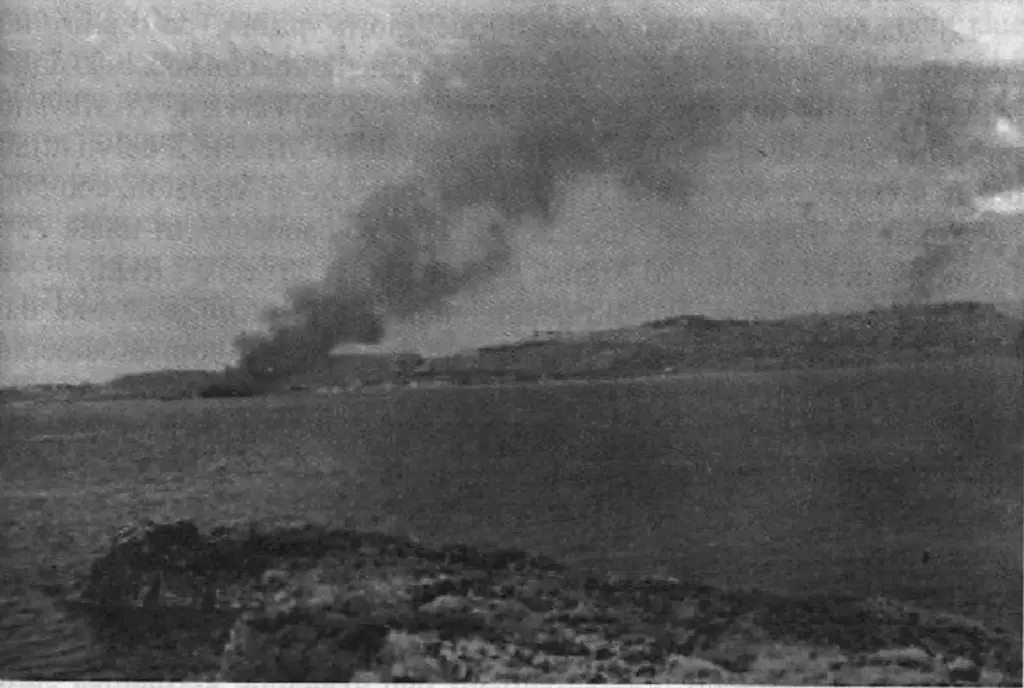
Italian artillery fire hits a German troop transport ship. Image: associazione acqui.it.
Following this incident, General Hubert Lanz, commander of the XXII Mountain Corp in Epirus, Greece, flew to Cephalonia and initiated one last negotiation with Gandin. However, this discussion sounded more like a request for unconditional surrender.
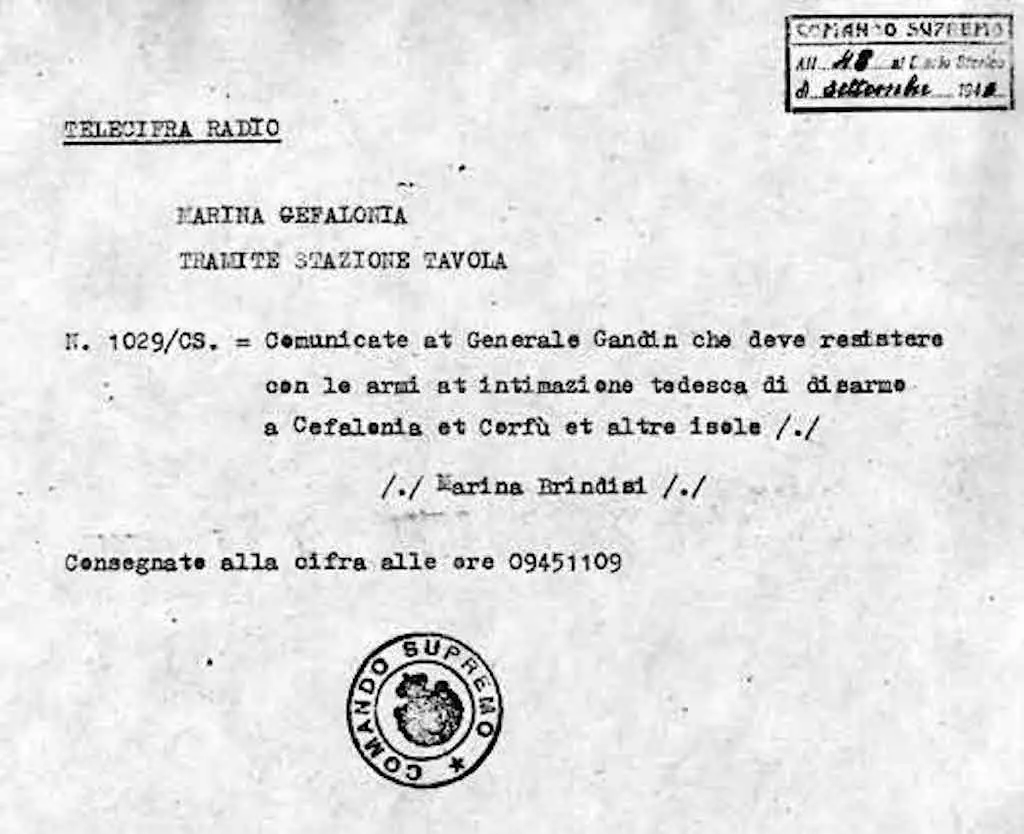
Notification by Comando Supremo authorizing Acqui Division the use in defense against German attack. Image: Public Domain
Comando Supremo in Brindisi informed Gandin via a message that the Acqui division must resist and fight the Germans. Gandin stood ready to obey the order but wanted assurance that his men stood by his decision.
Gandin instructed his officers to hear out the opinions of their men in an attempt to achieve a collective agreement. Testimony exists regarding officers questioning several units on what to do. Apparently a clear majority emerged.
14 September 1943
At 12:00 General Gandin delivered a final message to the Germans stating:
Following orders from the Supreme Command and by the will of its Officers and Men, the Acqui division will not surrender their arms.
A couple of hours later, Stuka bombers started began shelling the Acqui division and the battle started.
Additionally, the Germans also dropped leaflets urging the Italians to surrender. The leaflets stated:
Italian comrades, soldiers and officers, why fight against the Germans? You have been betrayed by your leaders!…Lay down your arms!! The road back to your homeland will be opened up for you by your German comrades.
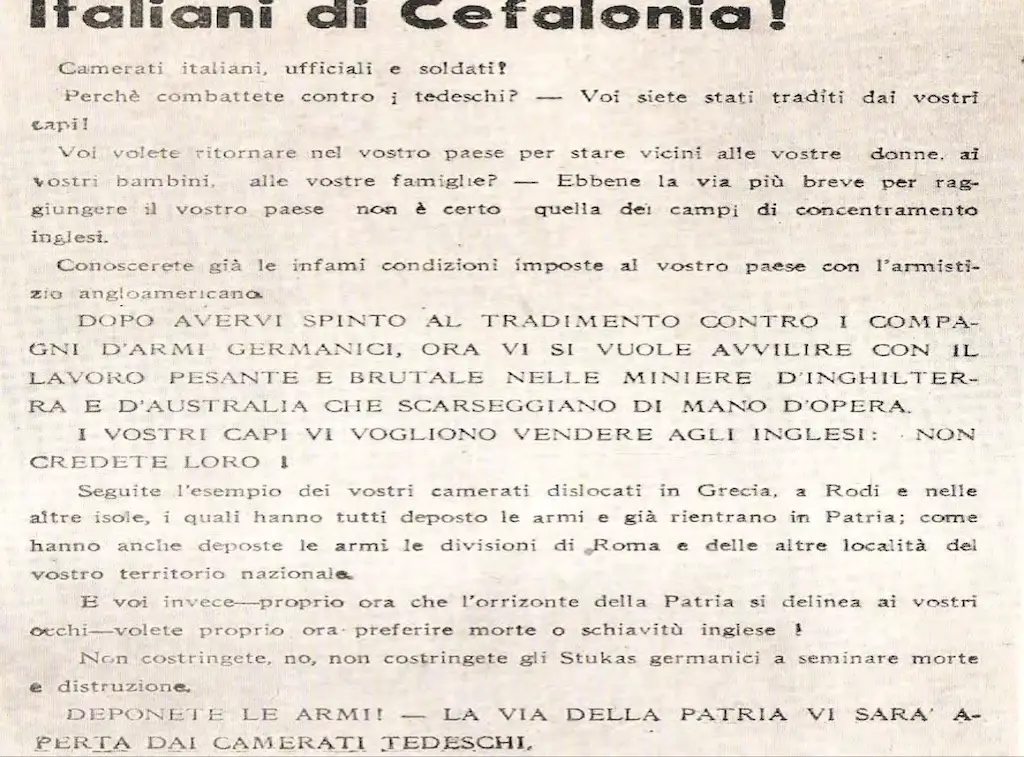
Leaflets written in Italian to persuade Italian forces.to drop their weapons. Image: associazione acqui.it.
Battle of Cephalonia, 14-22 September 1943
For eight days the Acqui division fought relentlessly, under continued air raids and against more German reinforcements coming from the mainland. These German units included the Battle Group Hirschfeld and the 104th Jager Division.
Initially, the Italians were successful. At one point, they captured approximately 400 German soldiers. However, as German reinforcements took hold and ammunition ran low, the odds were no longer in their favor.

German soldiers captured by Italian troops on Cephalonia. Image: associazione acqui.it.
On the 15th the Germans launched an attack from Kardakata in direction of Argostoli but the resistance of the Acqui 317° infantry regiment blocked such an attempt. In the evening the Italians started their counterattacks which mounted and increasing pressure on the besieged Germans in Kardakata. However, the reinforces from the mainland kept on coming and the ever-present Stuka bombers allowed the Germans to hold on and inflict several casualties to the Italians. By the 17th most of the Italian artillery batteries had been knocked out by the Stukas and the casualties were high.
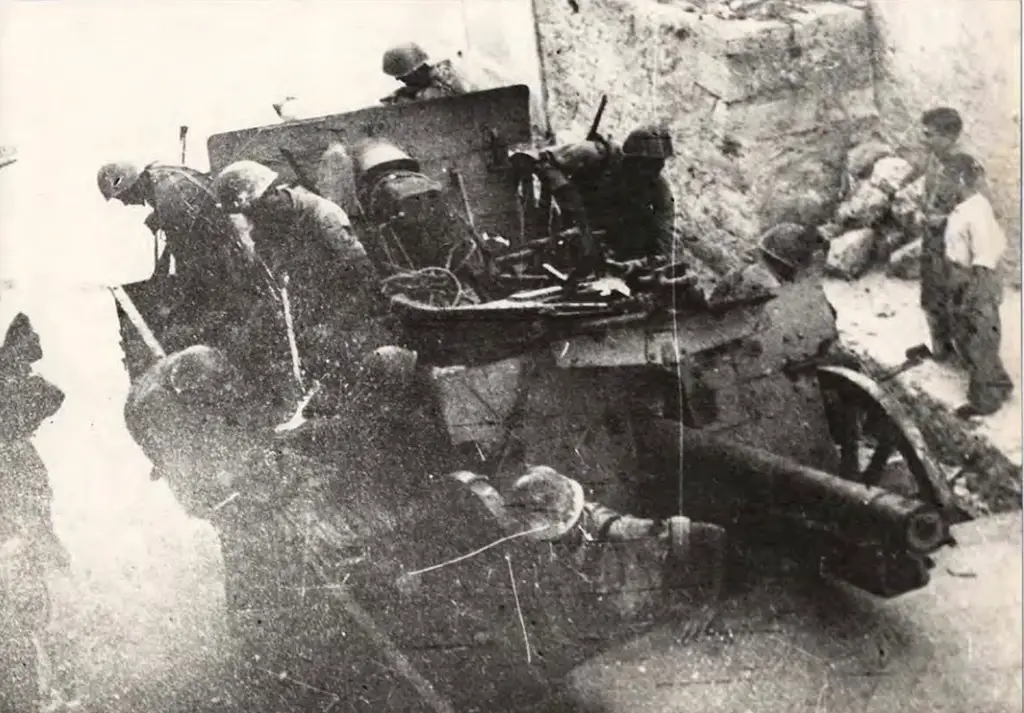
Italian artillery fire against German forces on Cephalonia. Image: associazione acqui.it.
On the 21st the Germans counterattacked the shattered Italian infantry battalions which mount their last stand. Unfortunately, the exact number of deaths is still uncertain, but it is widely accepted that by the evening of the 21st the Acqui lost between 1,200 and 2,000 men, including 50-70 officers.
Unfortunately, no reinforcements arrived from Italy in aid of the Acqui. The only help came in the form of a small group of Re.2002 fighter bombers of the Regia Aeronautica which flew some sorties on the 18 September. However, it could do little to reverse the situation on Cephalonia.
No Support From Badoglio’s New Government
The Italian co-belligerent airbase in Lecce had 300 aircraft within striking distance of Cephalonia. Because of the turmoil surrounding the recent armistice, Allied forces prevented the aircraft from responding in fear they would defect into German hands. Likewise, two Torpedo Boats, Sirio and Clio, dispatched to Cephalonia to assist the Acqui Division but received orders to return to port.
Cephalonia Massacre
On 22 September 1943, the Acqui Division was low on ammunition. Therefore, General Gandin assessing the dire situation and desire to spare his men, surrendered his division to the Germans.
As a result, from the 22nd to the 24th the massacre of the Acqui division in Cephalonia unfolded. The order came from General Lanz.
In several locations of the island, German troops executed Italian prisoners in mass. Perhaps the most atrocious massacre took place near Procopata where Germans forced survivors of the 17th Infantry Regiment inside a cave and burned them alive with flamethrowers. Meanwhile, on the 24th, German forces gathered Italian officers in a place known as Casetta Rossa or “Red House” and massacred them by firing squad. General Gandin was executed first.
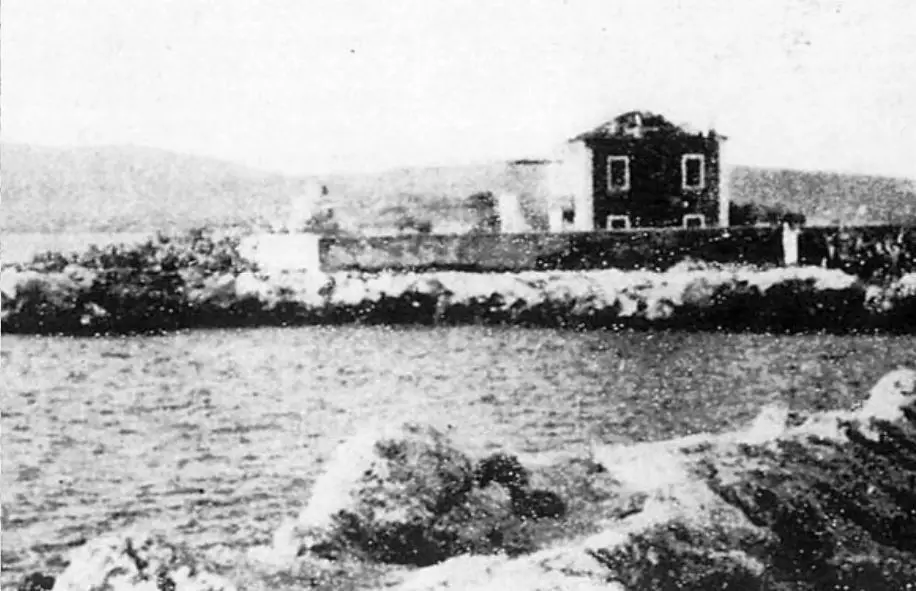
The Casetta Rossa, where General Gandin and 136 officers were killed. Later, an Ionian earthquake destroyed the Red House in 1953. Image: associazione acqui.it.
When the atrocities ceased, the Acqui division lost around 5,000 men and 400 officers during combat and subsequent executions. Another 3,000 men died during the transfer to the mainland aboard a hospital ship that struck a mine near Cephalonia.
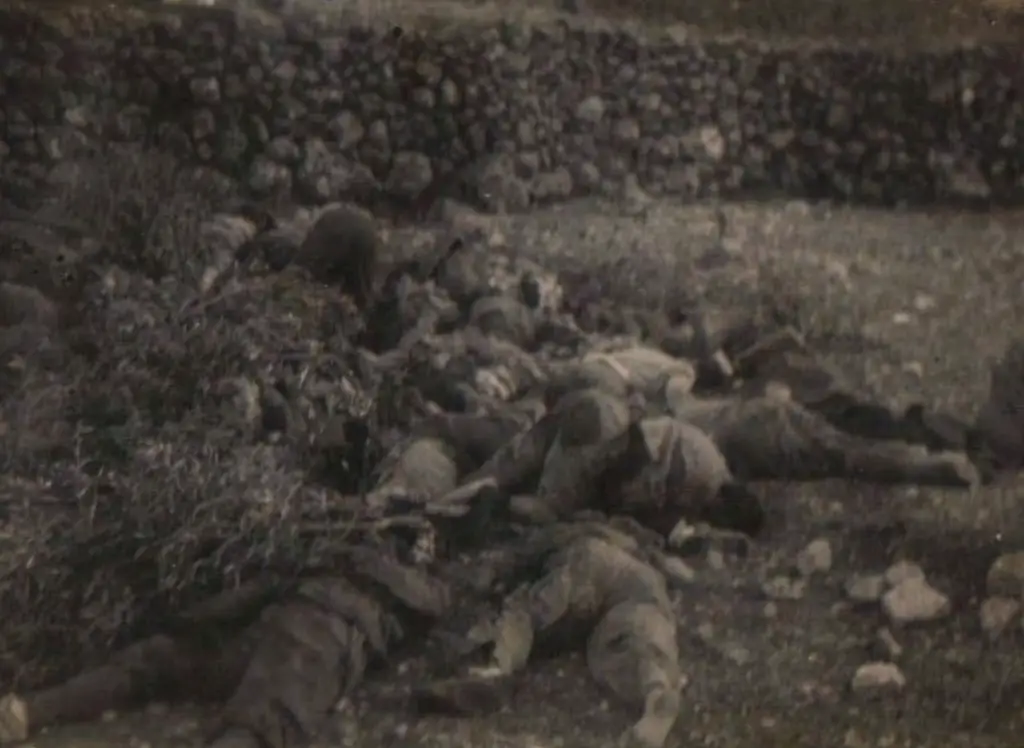
The Cephalonia Massacre involved the death of up to 3,800 Italian soldiers.
A final account of losses and survivors is hard to trace. Sources often disagree on the exact number. However, it is safe to say that out of 12,000 men of the Acqui division, less than 2,000 survived the end of the war.
Additional Source
D. Lembo, Cefalonia: 8 settembre 1943, una divisione di eroi, published on Eserciti nella Storia n.19 (2003).